Educating children in developing countries is not only about gaining knowledge and skills. It helps reduce poverty and offers a safe environment with supervision and support. In such countries, schools can even be a place for children to receive life-saving vaccines, fresh water and nutrient supplementation. Hundreds of architects from all over the world participated in a design competition for a project of a secondary school in Benga Parish in Malawi, the project aiming to provide a better education to the youngest citizens of the country by giving them the opportunity to access a decent secondary school infrastructure.
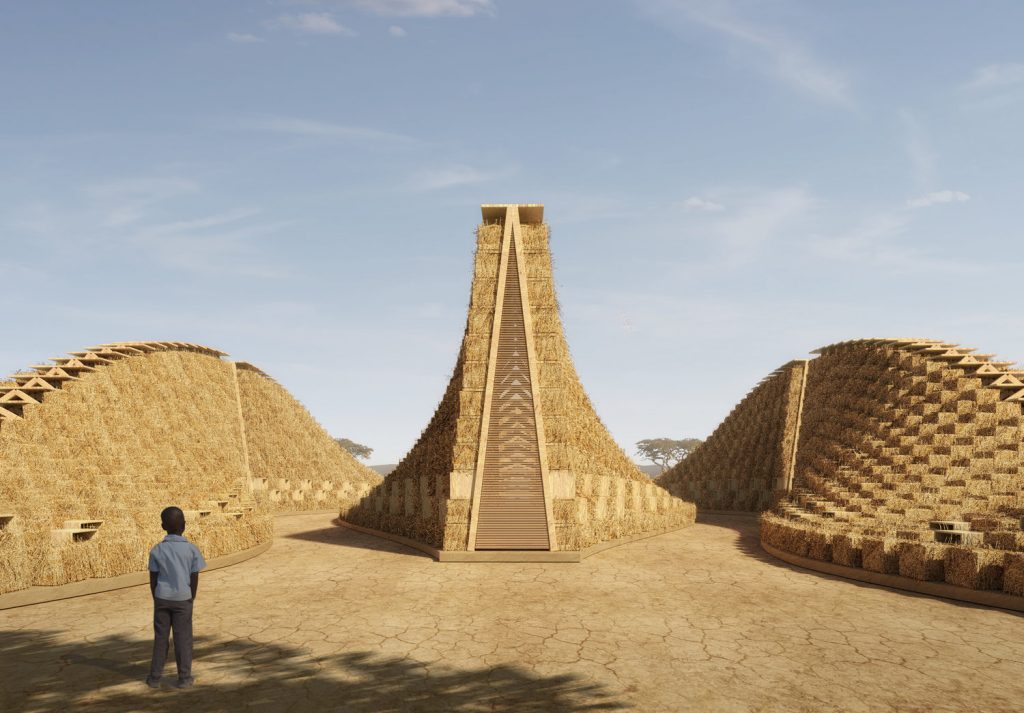
The competition was organized by Archstorming, on behalf of an NGO called Active Africa with a brief calling for a solution that would include a variety of spaces: classrooms, offices, computer rooms, libraries, laboratories and residential units for students and teachers, as well as outdoor spaces for animals and agriculture. The design should be modular for the building could be constructed in phases over several years and make use of local materials and construction systems. Sustainability was also one of the requirements.
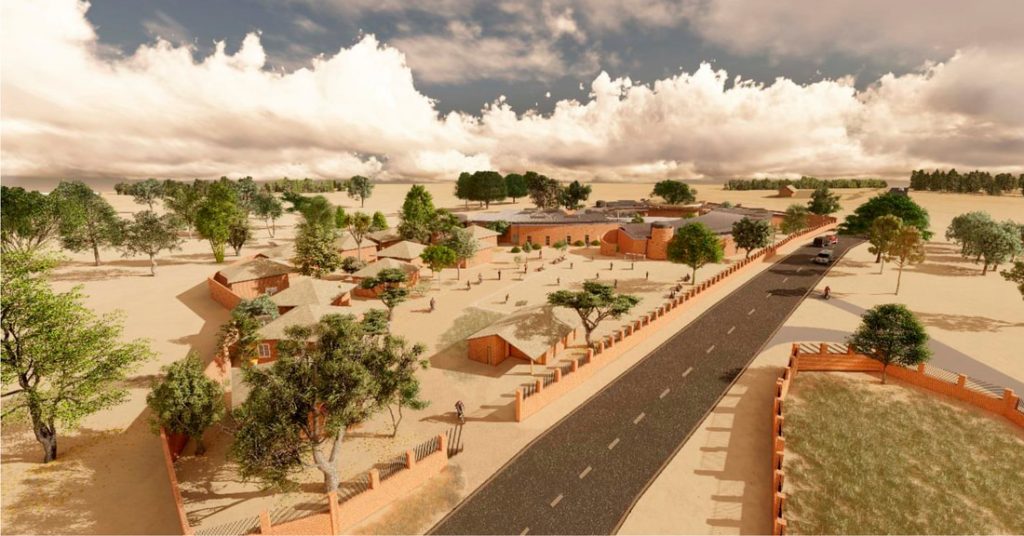
Proposal by Ben Mcmillan and Dequales Thompson (1st prize)
The winning proposal has been developed by Ben Mcmillan and Dequales Thompson, architects from Texas, USA. The design of the campus finds its origin in the representation of life-long learning as a journey along a path, with education serving as a catalyst for success for those underway. The architects quote the words of the astronaut Klapna Chawla, “The path from dreams to success does exist,” that served as an inspiration for the project.
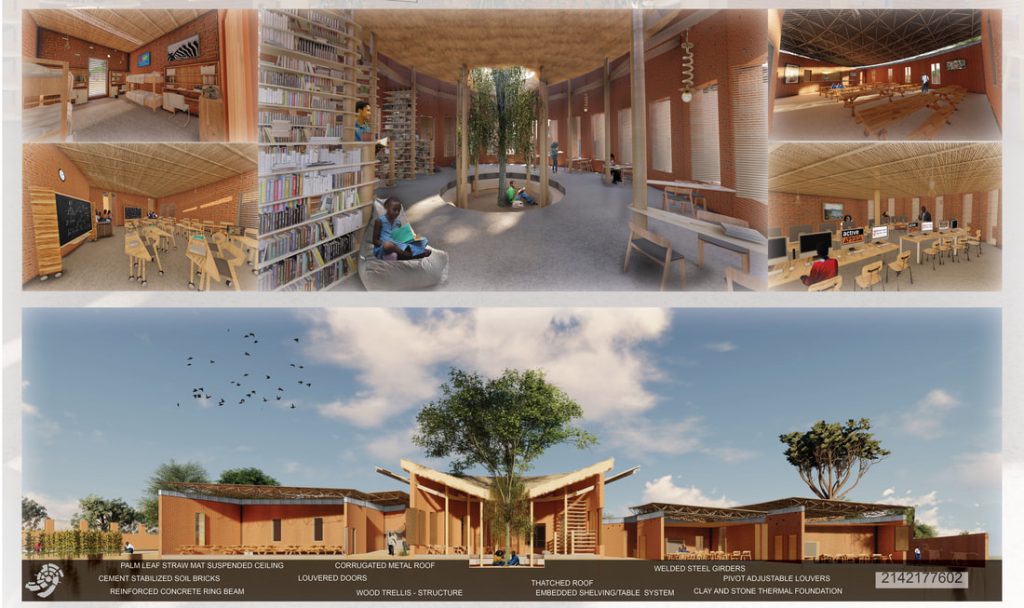
Proposal by Ben Mcmillan and Dequales Thompson (1st prize)
Following this train of thought, a singular boulevard was conceived, assessed by one controlled entry point, so that students of the school could walk the Path both physically and symbolically. The teacher’s village is placed near this entry point to act as a protective element to the dormitories flanking the boulevard. Roofed in thatch, the buildings for teachers are set to mimic the surrounding area. Their angular geometry creates an observable contrast to the curved surfaces of the student-oriented program.
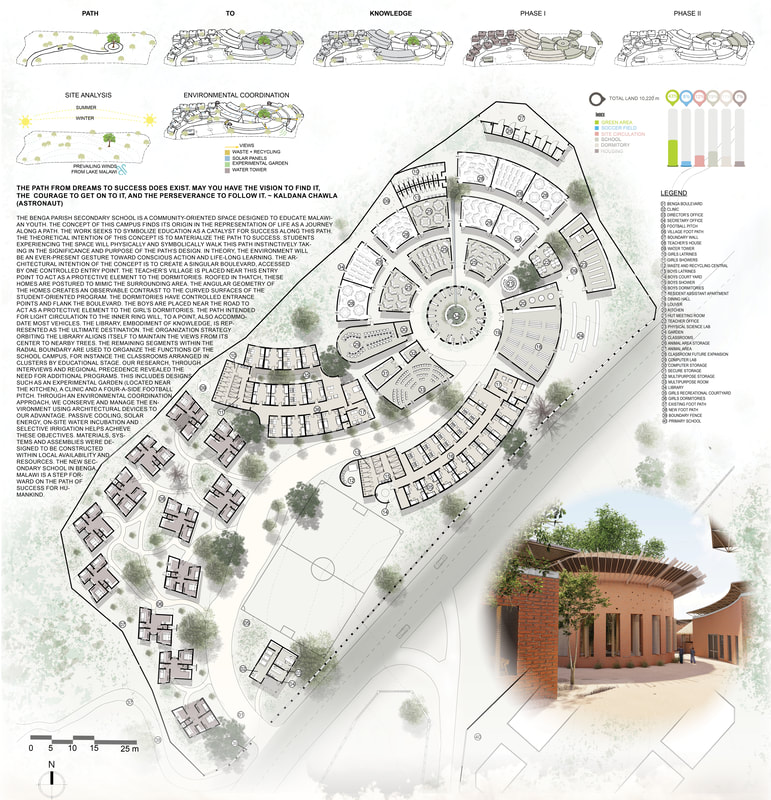
Proposal by Ben Mcmillan and Dequales Thompson (1st prize)
The paths leads those walking it to the inner ring, with a library, embodiment of knowledge, as the ultimate destination. The organization strategy orbiting the library aligns itself to maintain the views from its center to nearby trees. The remaining segments within the radial boundary are used to organize the functions of the school campus, for instance the classrooms arranged in clusters by educational stage.
The architects conducted a profound research, through interviews and regional precedence, which revealed need for additional programs, such as an experimental garden (located near the kitchen), a clinic and a four-a-side football pitch.
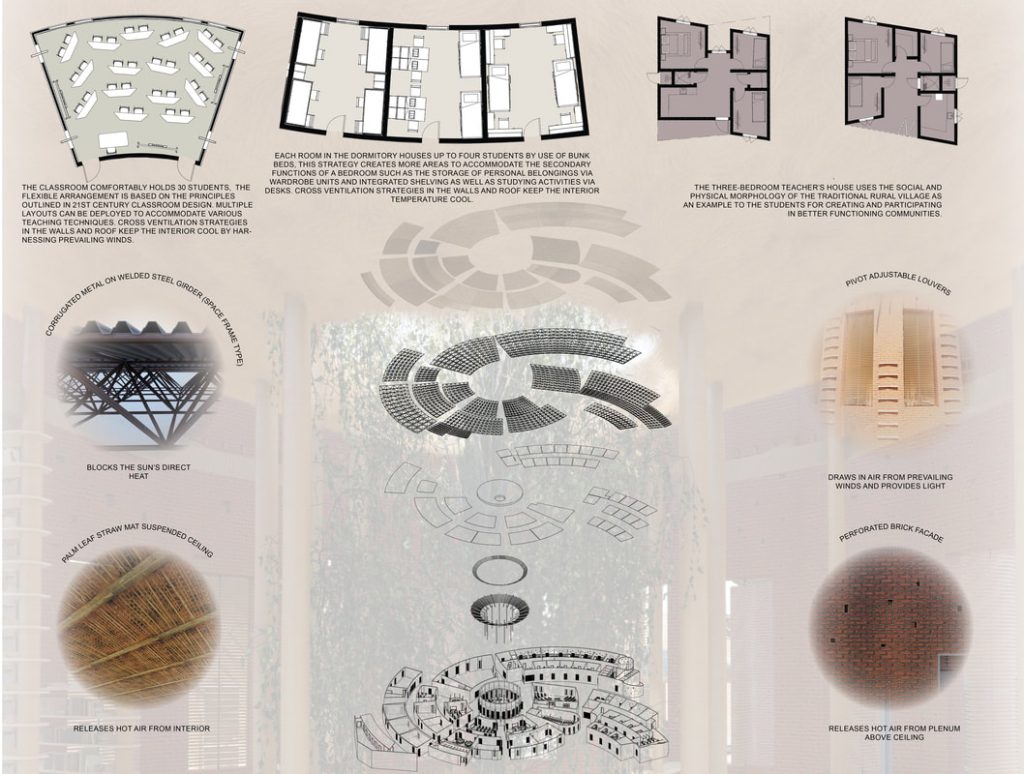
Proposal by Ben Mcmillan and Dequales Thompson (1st prize)
The choice of materials includes locally sourced cement stabilized soil bricks, clay and stone foundation, palm leaf straw, corrugated metal, and thatch. Palm leaf straw used for ceiling structures and perforated bricks facades release hot air from the interior; while corrugated metal blocks the sun’s direct heat. Passive cooling, solar energy, on-site water incubation and selective irrigation helps meet the requirements of sustainability.
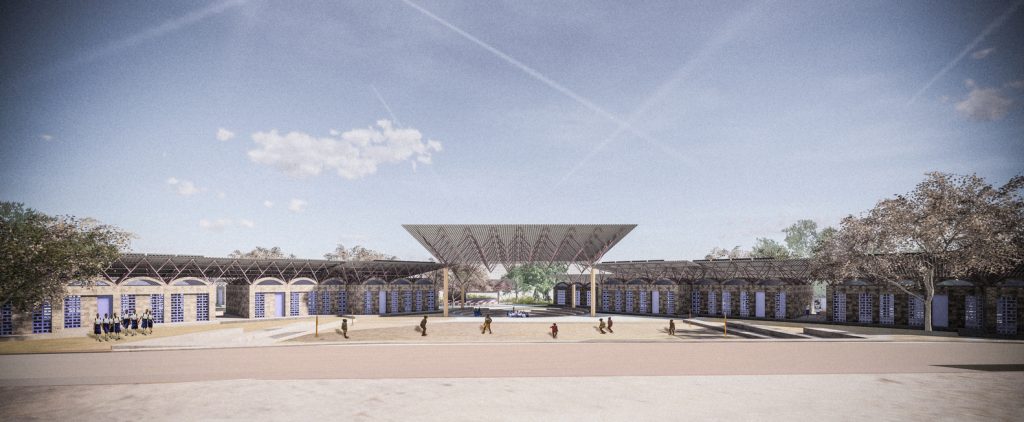
Proposal by Burckhardt+Partner (finalist)
Finalists in the competition, the Burckhardt+Partner, architecture practice with offices in Switzerland and Germany, has developed a scheme that embodies the old African proverb that it takes a community to educate a child, rather than simply the walls, roofs, and books of a school. Their proposal embraces its community, inviting the adjacent parish and primary school to grow together as a village.
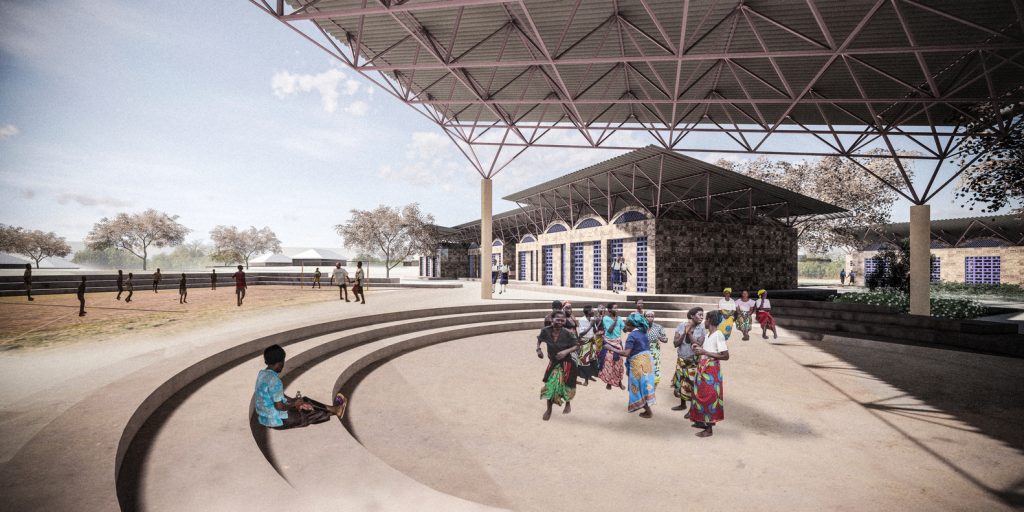

Proposal by Burckhardt+Partner (finalist)
One single constructive unity respecting local materials and traditions is used throughout the village in different variations or combinations. The aim of the material palette is to profit from local resources and techniques, enhanced by technological thinking. The walls are built from compressed clay bricks made by the local community. The buildings are covered by a light metal truss and tin metal roof, which allows the implementation of solar panels as well as ensures water and heat protection and rainwater harvesting. Terracotta floors are made from compressed soil utilizing local techniques.
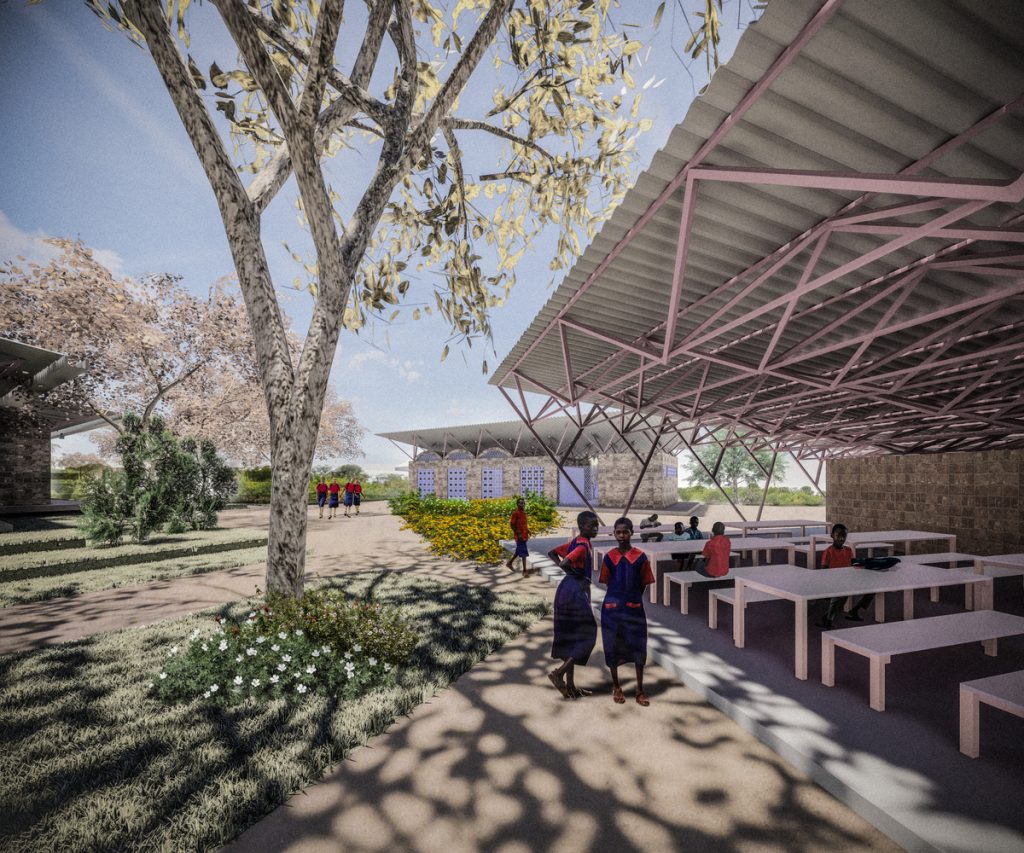
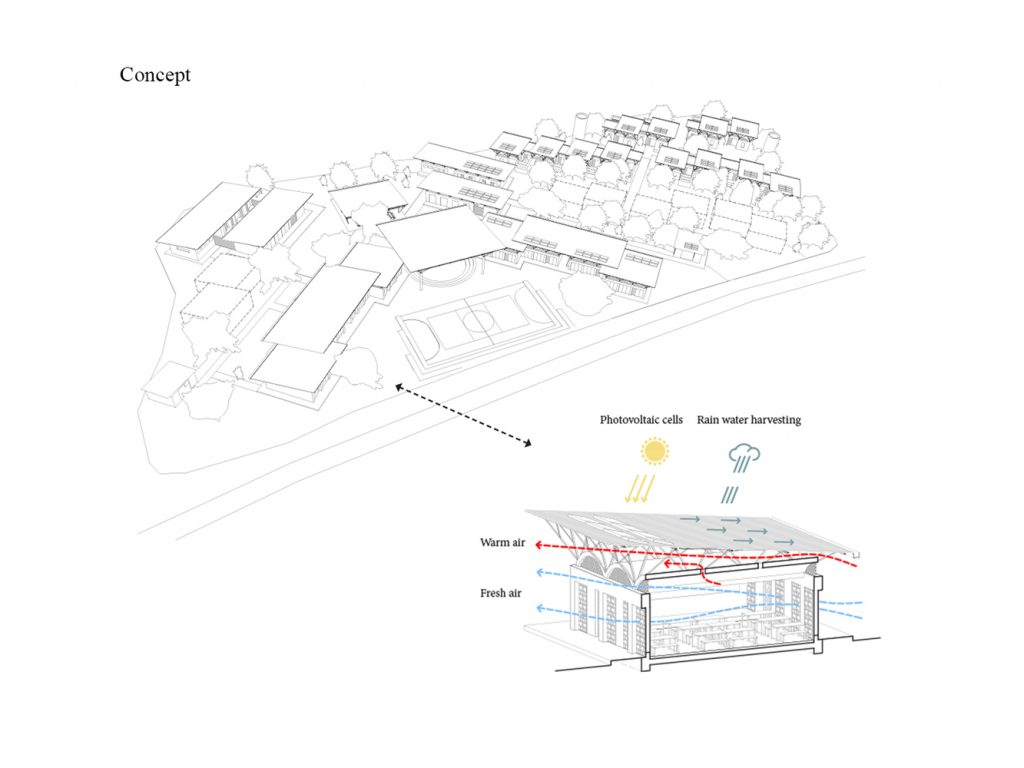
Proposal by Burckhardt+Partner (finalist)
Responding to the brief focused on modularity, the architects have suggested a radial organization of the program, allowing occupants to build gradually when necessary in a well-orchestrated sequence. The radial concept also follows the existing topography, allowing the heart of the plot to open up to the wider community. The inner “heart zone” contains a sports courtyard serving the entire community and an open multipurpose “venue” for gatherings and performances. Classrooms and complementary programs of the school are evenly distributed at either side of the scheme, promoting dialogue, exchange, and constant use of the central courtyard.
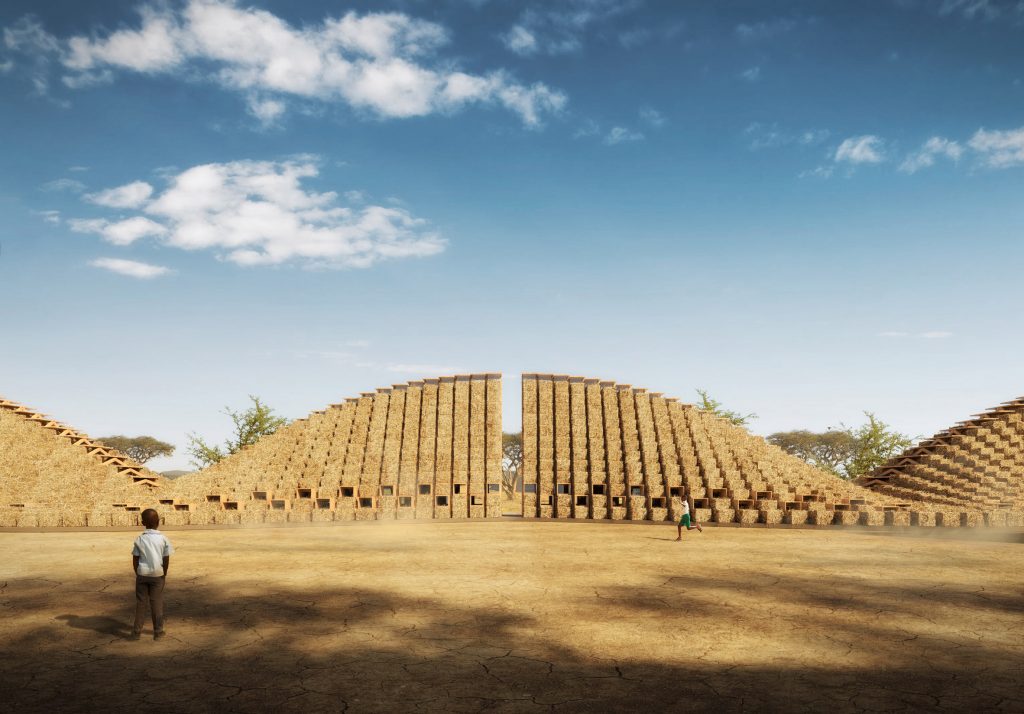
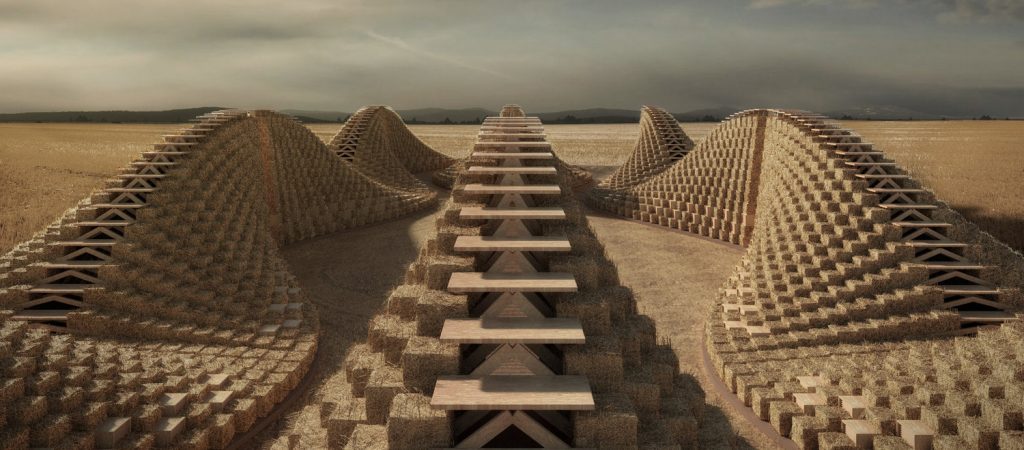
Straw Bale School proposal by Nudes (also header image)
The bold design proposal by Indian architecture office Nudes, led by Nuru Karim, encompasses a modular wooden structure and curved walls made from straw bales. The concept is based on a modular timber framework comprising a series of ladder-like wooden A-frames arranged linearly to create forms varying in height and width. The building’s outer shell is formed by hay bales supported by horizontal treads, though the studio mentions that other local infill materials such as earth and terracotta could also be used as an alternative.
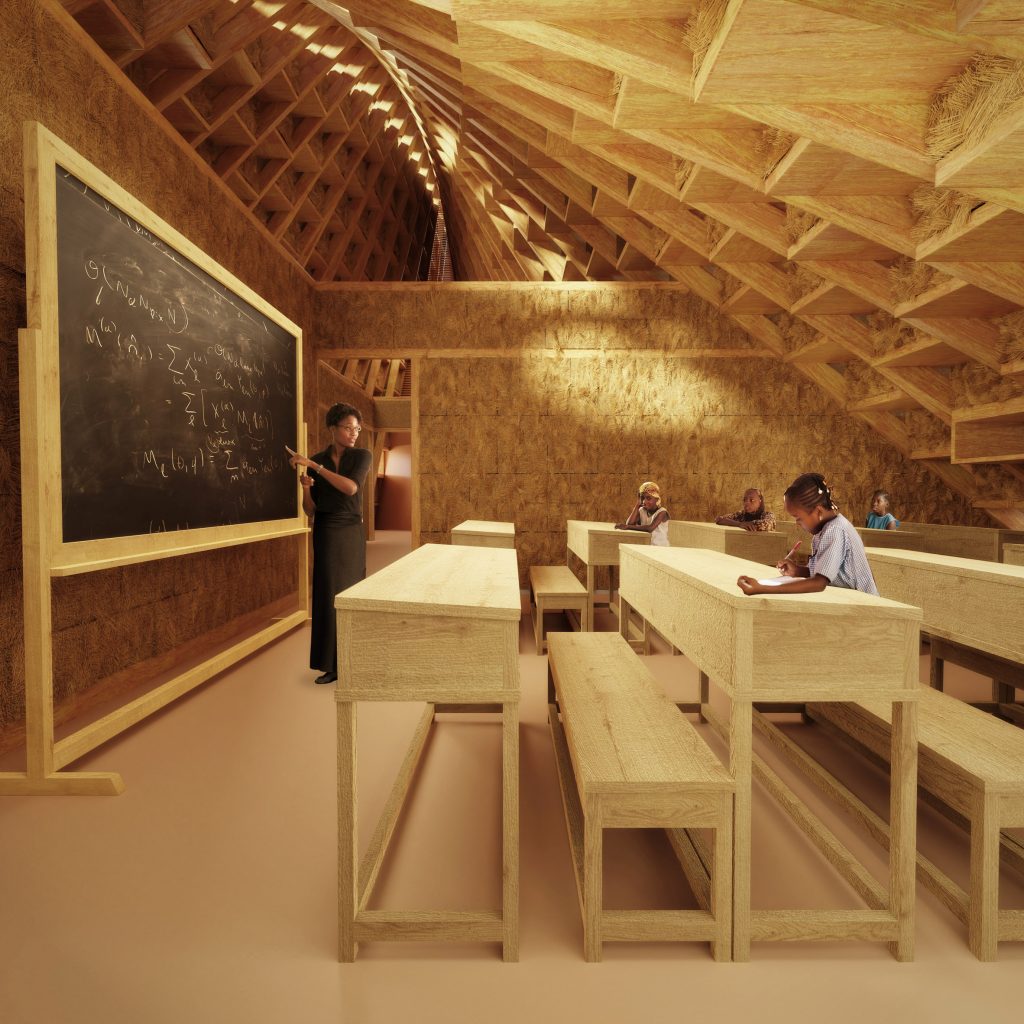
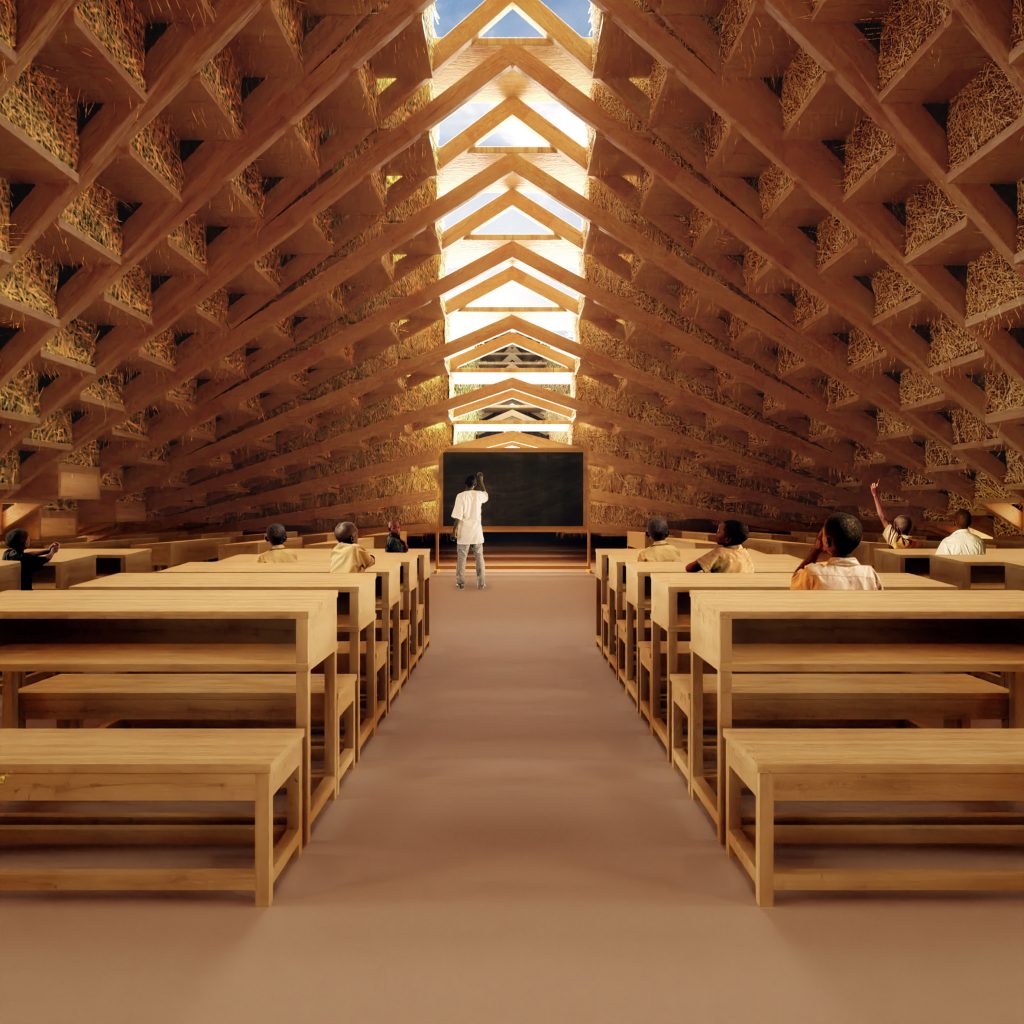
Straw Bale School proposal by Nudes
Openings created by exposing the treads at eye level would offer light and ventilation, while the topmost treads would be left empty to create gaps providing the circulation of fresh air. Entrances would be located at the ends of each module, where the structure is tallest. The narrower but taller spaces at the ends are planned to accommodate stepped seating and shelving, as well as services such as stairs and toilets. The floorplan offers the potential for multiple units to be arranged in a pattern that would form a series of outdoor spaces for recreational activities.
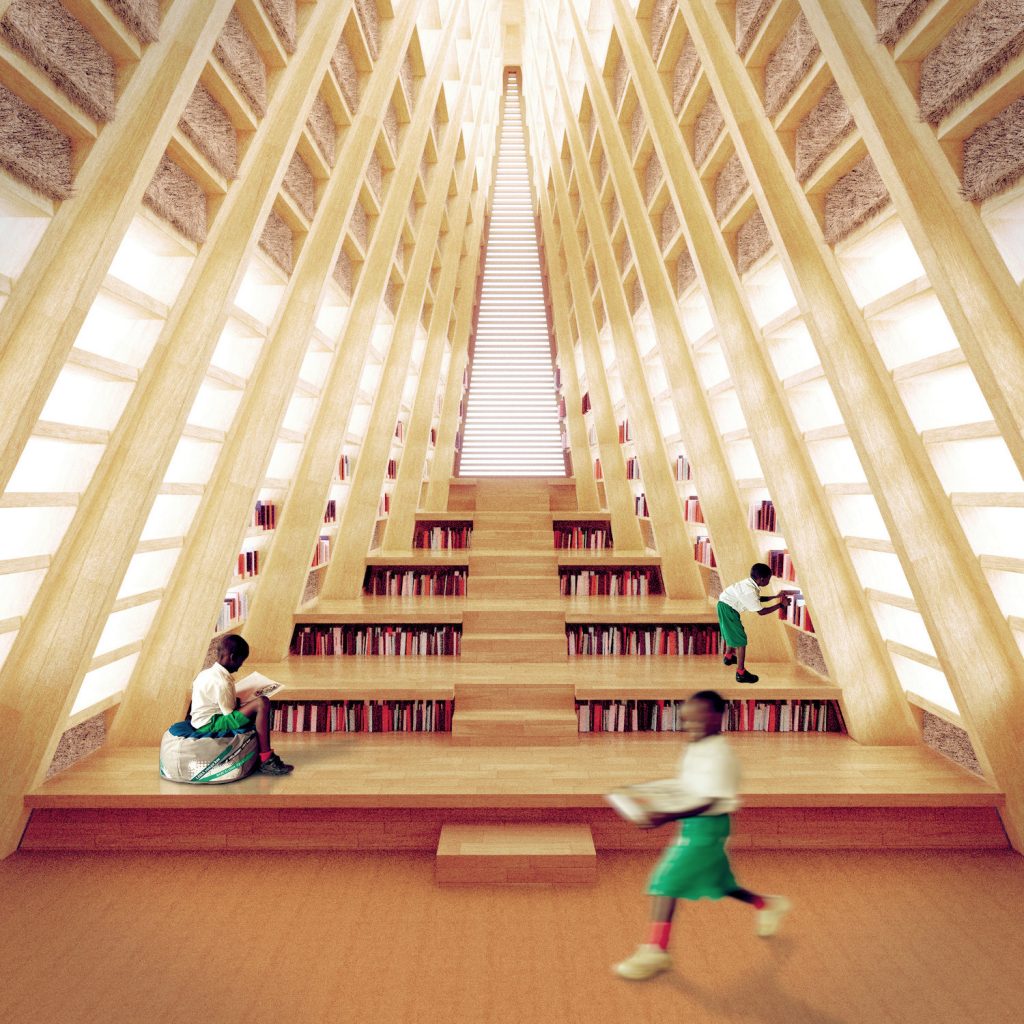
Straw Bale School proposal by Nudes
According to the architects, thorough research was conducted into the suitability of straw bales as a construction material, in terms of fire resistance and structural performance. Although the proposal was not selected by the competition jury, the studio intends to continue developing prototypes to test the potential of the material.